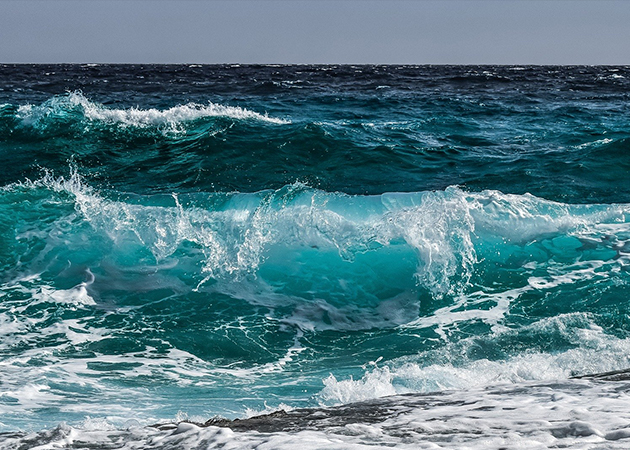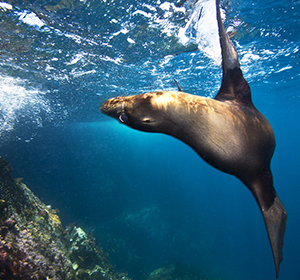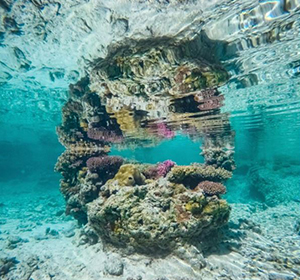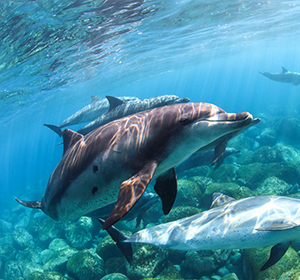Not to be confused with Ocean or World Ocean
The sea is the interconnected system of all the Earth's oceanic waters, including the Atlantic, Pacific, Indian, Southern and Arctic Oceans.
However, the word "sea" can also be used for many specific, much smaller bodies of seawater, such as the North Sea or the Red Sea.There is no sharp distinction between seas and oceans, though generally seas are smaller, and are often partly (as marginal seas) or wholly (as inland seas) bordered by land.
However, the Sargasso Sea has no coastline and lies within a circular current, the North Atlantic Gyre.
The sea, the world ocean, or simply the ocean is the connected body of salty water that covers about 71% of Earth's surface (361,132,000 square kilometres [139,434,000 sq mi]), with a total volume of roughly 1,332,000,000 cubic kilometres [320,000,000 cu mi].It moderates Earth's climate and has important roles in the water cycle, carbon cycle, and nitrogen cycle. It has been travelled and explored since ancient times, while the scientific study of the sea—oceanography—dates broadly from the voyages of Captain James Cook to explore the Pacific Ocean between 1768 and 1779.
Oceanography and Physical oceanography
content text content text content text content text content text content textWind blowing over the surface of a body of water forms waves that are perpendicular to the direction of the wind.
A tsunami is an unusual form of wave caused by an infrequent powerful event such as an underwater earthquake or landslide, a meteorite impact, a volcanic eruption or a collapse of land into the sea.
Tides are the regular rise and fall in water level experienced by seas and oceans in response to the gravitational influences of the Moon and the Sun, and the effects of the Earth's rotation.

06.23.195.207.22
days
hours
minutes
seconds
Looking for the beauty of the ocean.

An underwater photographer who keeps bringing surprises under sea level ashore
Before engaging in underwater photography, Yorko used to be an art director of graphic design working from 9 to 5 in Taipei. Tired of the unchanging life, he visited Palau and fell in love with this beautiful island country Six years.

Time spent in self-reflection is never wasted – it is an intimate date with yourself
Self-reflection and Introspection, two processes which started to grow ever more important in the past few months of my lifeWith all the hustle and bustle usually filling our everyday lives and minds we often forget to pay attention.

The first photographer in Taiwan to photograph whales and dolphins underwater.
As a soldier in the university, he took the initiative to get to know the Kuroshio Ocean Culture and Education Foundation,and then became a full-time underwater photographer and entered the world of whales and dolphins.